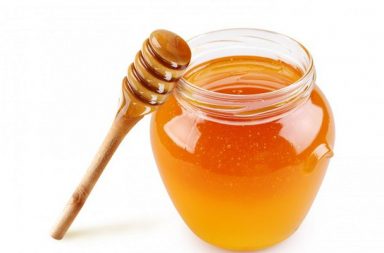Why not spoil the honey?
Many factors work in harmony to allow honey to last forever, such as its acidity, its low water content, and its containment of hydrogen peroxide.

Archaeologists, while excavating tombs of ancient Egyptians, often find something unexpected; pots containing preserved honey for thousands of years. Archaeologists have discovered that this honey remains edible after thousands of years, which is a clear indication of the eternal validity of honey.
There are few examples of foods that maintain their validity and are in their raw state for long periods of time, such as salt, sugar, dry rice and others. But there is something different in honey; it is kept in its edible state directly. While you can not eat raw salt or dry rice in the condition where you have been kept, you can enjoy a bowl of honey that goes back thousands of years without having to prepare it, as if it were only one day old. Moreover, the long-term validity of honey gives other medicinal properties that are not available in other foods, which raises the question: What makes honey a distinctive food?
The answer is as complex as the flavor of honey, so you can not get a product that does not expire without a great harmony between its ingredients. The first reason comes from the ingredients of the chemical honey itself; first and foremost, there is sugar. Sugars are moisturizers, meaning they are inherently low in water, but they can absorb moisture easily if exposed to air.
Amina Harris, executive director of the Center for Pollination and Honey at the Robert Mondavi Institute at the University of California Davis, said: "Honey is inherently low in moisture, and most bacteria and microorganisms can not live in such a medium. . What Harris pointed out is an important feature that contributes to prolonging honey. Bacteria and microorganisms must live inside honey to spoil, but they do not have enough time to live because of their hospitable environment.
Honey, by its very nature, is also very acidic, with an acidity of between 3-4.5, which will kill almost anything that tries to grow in it. Therefore bacteria and other microorganisms must look for another environment to live in. Their life expectancy within honey is very low.
Honey, however, is not the only nutrient among the available sources of food. Molasses - produced from a by-product of sugarcane - are highly hygroscopic and acidic and have a pH of about 5.5. Although it lasts long - as long as the sugar cane lasts longer than other fresh produce - it will ultimately spoil.
So why molasses spoil while honey lasts indefinitely? It has to do with bees.
"The bees have a special charm," says Harris. "But there must be a special chemical formula that goes into honey during bee production. Nectar is the first material collected by bees to make honey, which - according to Harris estimates - a material rich in water by 60-80%, but bees play an important role during the process of production of honey in the drying of nectar completely and rid of a large part of this moisture through fluttering wings , And the chemical composition of bees also plays a role in the elasticity of honey. The bees' stomach contains an enzyme called glucose oxidase, which mixes this enzyme with nectar, producing two types of chemical compounds: gluconic acid and hydrogen peroxide. Hydrogen Peroxide is one of the factors that prevents microorganisms from growing in honey and spoil it.
Therefore, honey has been used as a medical treatment for several centuries; it has been incorporated into 30% of the prescription according to the Sumerian clay tablets. Its high viscosity and hydrogen peroxide form an excellent barrier to wounds so as not to be infected. Honey was used in medical treatment by the Sumerians and ancient Egyptians as a natural suppressing the growth of any bacteria, and was used by ancient Egyptians in the manufacture of ointments for the treatment of skin diseases and eye diseases.
It absorbs moisture from the wounds and makes it susceptible to contamination. Honey releases a small amount of hydrogen peroxide, which is exactly what we need to heal wounds.
The honey you buy from the shops is wrapped in plastic bottles that have been heated and treated so that they do not contain any small minutes, but if you buy honey from a small vendor you may notice several small crystallized minutes, but these can be kept tightly closed.
Source
https://www.smithsonianmag.com/science-nature/the-science-behind-honeys-eternal-shelf-life-1218690/
Really incredible. Honey is really long lasting.
This post received a 1% upvote from @morwhale team thanks to @tag2017! For more information, click here! , TeamMorocco! .
STEEM Price : 3.188 $
This post has received a 6.92 % upvote from @aksdwi thanks to: @tag2017.
This post has received a 0.53 % upvote from @buildawhale thanks to: @tag2017. Send at least 1 SBD to @buildawhale with a post link in the memo field for a portion of the next vote.
To support our daily curation initiative, please vote on my owner, @themarkymark, as a Steem Witness
Your post had been curated by the @buildawhale team and mentioned here:
https://steemit.com/buildawhale/@buildawhale/buildawhale-curation-digest-01-03-17
Keep up the good work and original content, everyone appreciates it!